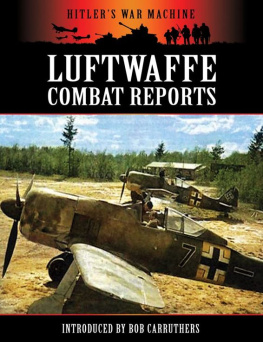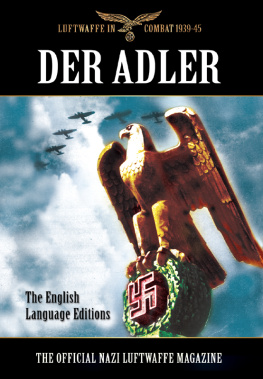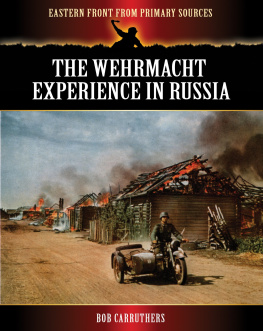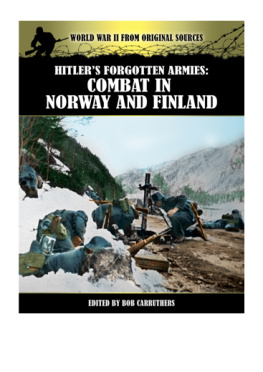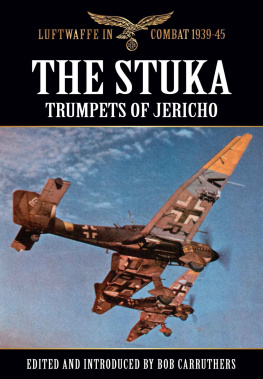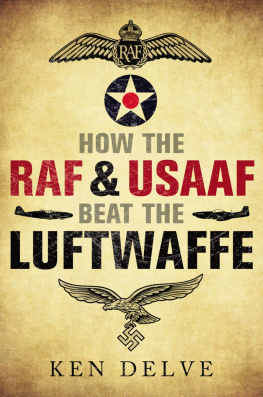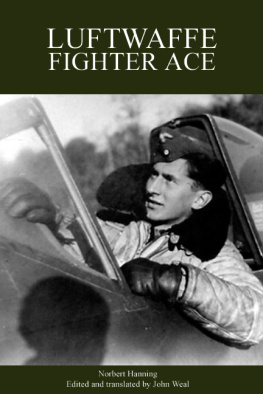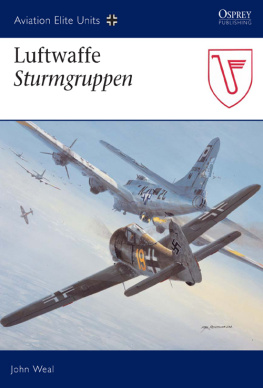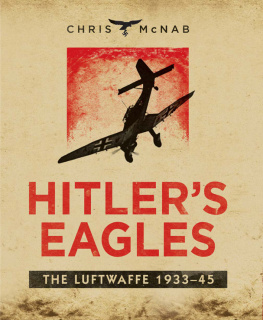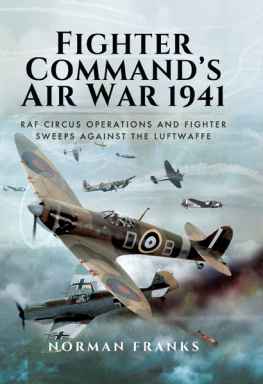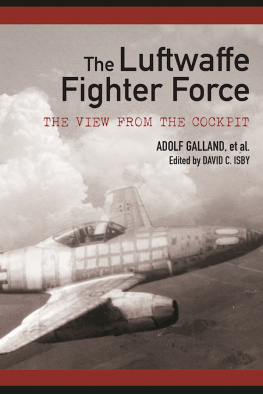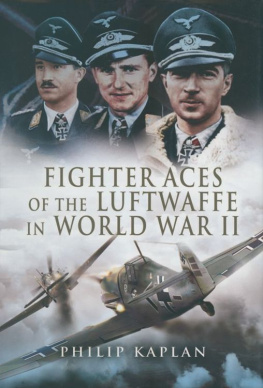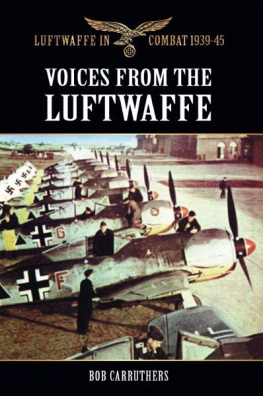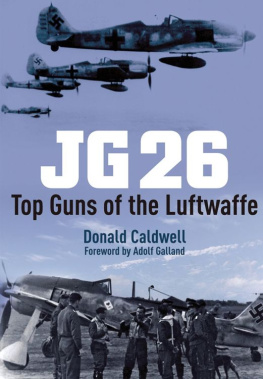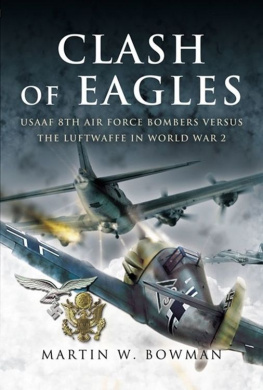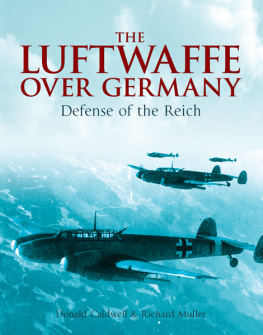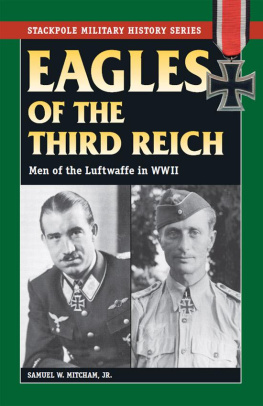
HITLERS WAR MACHINE
LUFTWAFFE COMBAT REPORTS
Introduced by Bob Carruthers

www.codahistory.com
This ebook edition published in Great Britain in 2011 by
Coda Books Ltd, Unit 1, Cutlers Farm Business Centre, Edstone,
Wootton Wawen, Henley in Arden, Warwickshire, B95 6DJ
www.codahistory.com
Copyright 2011 Coda Books Ltd
All rights reserved. No part of this publication may be reproduced or
transmitted in any form or by any means, electronic or mechanical, including photocopy, recording, or any information storage and retrieval system,
without permission in writing from the publisher.
A CIP catalogue record for this book is available from the British Library
ISBN 978 1 908538 11 6
INTRODUCTION
Following the final collapse and unconditional surrender of the Wehrmacht in May 1945, the long hoped for peace in Europe had finally arrived. Unfortunately tensions appeared almost immediately between the former Allies which soon developed into the Cold War. As relations with the Soviets quickly cooled the prospect of an armed clash loomed on the horizon. Britain and America had to face up to the possibility that the pilots of the USAAF could soon find themselves lining up alongside the men of the recently defeated Luftwaffe in a fight to the death with Red Army.
With that appalling prospect in mind the pool of hard-won knowledge which existed in the upper echelons of the Luftwaffe was invaluable and had to be collected and systematically recycled to the US and British forces as quickly and as thoroughly as possible. The USAAF therefore began an extensive series of debriefs with senior Luftwaffe pilots in order to absorb every possible lesson from the Luftwaffe experience at the tactical, operational and strategic level.
Senior Luftwaffe figures such as Adolf Galland were to prove extremely valuable in delivering the crucial experience of the war in the air.
The material from interviews relating to the study of World War II on land was prepared for wider publication by a group of former German generals and general staff officers including Erhrad Rauss. The extensive interview programme eventually appeared as the German Report Series and today they represent a fascinating glimpse from the operational and tactical viewpoint of the war in the east at the sharp end on land. Unfortunately there was no equivalent publishing programme concerning the war in the air and each interview remains a distinct entity which has to stand alone as a separate piece of intelligence gathering.
The USAAF interviews nonetheless provide a fascinating insight into the Luftwaffe from the best possible primary sources and a representative sample of those interviews is published here. The point of view, the expressions, and even the prejudices of the German authors remain. To modern readers some of the sentiments may appear unreconstructed and even hostile, as such they are clearly of their time, but they do represent a real wealth of detail on the war in the air from an original point of view.
These detailed accounts of Luftwaffe combat operations are taken from the extensive series of interviews conducted with higher echelons of the German Fighter Force by the USAAF very shortly after the end of the Second World War. The new generation of German fighters such as the Me.262 was at the forefront of the agenda and the USAAF were particularly keen to learn as much as they could about these machines and their successes and failures.
These fascinating insights cover the experience of the Luftwaffe during the whole war and are drawn from the interviews conducted by those who managed to excel despite all that was thrown at them: Heinz Bar, an ace with 240 victories to his credit; Walter Dahl, an anti-bomber specialist; Hitsch Hitschhold, who undertook many high-risk operations with his Stukas and FW-190s; and Adolf Galland of the Luftwaffe and author of the classic memoir, The First and the Last.
The frustrations which the pilots of the Luftwaffe encountered with their own aircraft are well voiced within these interviews, as is the tenuous relationship between the fighter and bomber wings of the Luftwaffe. Political interference, the bane of the Wehrmacht, also raised its head within the Luftwaffe and the consequences of intermeddling by Hitler and others in the Nazi machine are expressed in the interviews.
These absorbing primary source accounts of aerial combat at the tactical, operational and strategic level provide a unique window on the Luftwaffe at war. As historians, students of history or general readers, we should all be grateful for the work which was undertaken by these former enemies during the 40s, which now affords an extensive inside record of an experience from highly trustworthy sources concerning the terrible events which all of us can be thankful that we did not have to share.
Bob Carruthers
1. PROTECTION OF NAVAL FORCES AND CONVOYS BY FIGHTER FORCES.
Tactical Regulation for the Channel Breakthrough by Generalleutnant Galland.
Spring 1942.
I. Operational Principles.
(1) The fighter escort mission is that of protecting naval forces and convoys from attacks by enemy torpedo aircraft, bombers and fighter bombers, as well as repulsing enemy shadowing aircraft and destroying them. It is necessary in all ocean areas where attacks of enemy aircraft are to be reckoned with. Lacking aircraft carriers, the limits of fighters escort depend on the range of our fighters.
Of greatest urgency is protection against torpedo aircraft.
(2) Escort can be conducted by:
(a) Close Escort:- It furnishes the best security against air attacks by continuous cover directly over the ships, but requires nevertheless strong forces.
(b) Cover Escort (Striking Reserve):- It is used when strong fighter forces are available over and above the close escort to combat the approach flights of enemy formations.
(c) Alerted Escort:- Used when only weak forces are available. Fighters make a scramble start only after the recognized approach of enemy formations. It provides no sure protection for shipping.
(3) The use of fighter escort is dependent upon weather and time of day.
(a) For day operations visibility of at least 5 km. and ceiling of about 1500 feet are operational minima.
(b) Twilight requires usually the strongest fighter cover, because it is the favorable time for torpedo attacks. Operations are only possible when visibility is 6 km., so that; (1) enemy and friendly aircraft can be distinguished from the ships (taking into consideration the difficulties attending recognition signal exchange) and (2) so that fighters can recognize enemy fighter bombers in time.
(c) By night -including by bright moonlight -and for operations which require night take-offs or landings, only TE aircraft (night fighters or TE day fighters) can be used.
(4) The relieving of the close escort is to be so arranged that an overlapping of ten minutes at least occurs over the ships. In this period a double protection should be over the objective, insofar as pressing reasons do not make necessary the immediate return of the relieved close escort. If an enemy attack occurs during the changing of the escort, the relieved fighter formation must take part in the combat up to the limit of its flying endurance.
(5) Independent breaking off by the fighter escort may only take place:
(a) At the limit of endurance.
(b) In bad weather or in twilight when too low visibility no longer permits the carrying out of the mission. In both cases a simultaneous report must be made to the ships by visual signals. Report will be by radio only when radio silence has not been ordered.
Next page
